if (world_.rank() == 0)
std::cout << "test the memory requirements of edges only using own graph" << std::endl;
world_.barrier();
// std::cout << getpid() << std::endl;
auto mems1 = MemoryMonitor::instance().get_all_proc_memory();
if (world_.rank() == 0) {
std::cout << "before create graph" << std::endl;
std::cout << mems1 << std::endl;
}
size_type vertex_size = 5000;
size_type per_batch_size = vertex_size / world_.size();
typedef boost::adjacency_list<boost::vecS, boost::distributedS<ProcessGroup, boost::vecS>, boost::bidirectionalS> Graph;
ProcessGroup pg;
Graph g(vertex_size, pg);
Timer t;
for (size_type i = world_.rank() * per_batch_size; i < (world_.rank() + 1) * per_batch_size; i++) {
for (size_type j = 0; j < vertex_size; j++) {
Graph::vertex_descriptor from = boost::vertex(i, g);
Graph::vertex_descriptor to = boost::vertex(j, g);
boost::add_edge(from, to, g);
}
}
synchronize(g);
t.stop();
t.print();
world_.barrier();
auto mems2 = MemoryMonitor::instance().get_all_proc_memory();
if (world_.rank() == 0) {
std::cout << "after create graph" << std::endl;
// std::cout << getpid() "has" << std::endl;
std::cout << mems2 << std::endl;
}
auto total_edge_size = vertex_size * vertex_size;
auto edge_size_per_proc = total_edge_size / world_.size();
std::cout << "edge_size_per_proc:" << edge_size_per_proc << std::endl;
if (world_.rank() == 0) {
for (auto i = 0; i < world_.size(); i++) {
std::cout << "mem increase total:" << mems2[i] - mems1[i];
std::cout << "\tper edge:"
<< (mems2[i] - mems1[i]) * 1024 * 1024 / edge_size_per_proc
<< std::endl;
}
}
returned below results
edge_size_per_proc:6250000
mem increase total:1020.52 per edge:171.215
mem increase total:1016.33 per edge:170.512
mem increase total:1029.33 per edge:172.693
mem increase total:1018.72 per edge:170.913
It says memory usage per edge is 170 bytes. While I test memory for vertex, it is only 4 bytes, so I wonder why it takes 170 bytes to store an edge? I have looked deeper into the source code of boost, and found that it keeps two vectors per vertex for in_edge and out_edge edges, with the definition below:
std::vector< boost::adjacency_list<boost::vecS, boost::vecS, boost::undirectedS, MyVertexDescriptor, MyEdgeDescriptor>>
But when I use sizeof printed its size, it is only 16 bytes, and after counting in both in and out edges, it should be 32 bytes. So where is the rest 140+ bytes gone?
